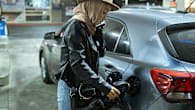Public charging and electric vehicles go together like the chicken and the egg - you can’t have one without the other.
Tesla understood this early on, and instead of waiting for third-party providers to build a public network of chargers, the American brand went out and did the job itself.
According to the latest data at the time of publication, there are 100 Tesla Supercharger stations in Australia, and after initially being exclusive to Tesla owners the company has since made them available to any compatible electric vehicle - for a price.
In this article we’ll answer the important questions including, ‘how much does it cost to charge a Tesla in Australia?’, ‘how long does it take to charge a Tesla with a Supercharger?’, and ‘is there a Tesla charging station near me?’
How much does it cost to charge a Tesla using a Supercharger in Australia?
The simple answer to this question is… there is no simple answer. Tesla uses a relatively complex method to charge users of its Supercharger network based on whether you own a Tesla or not, or if you pay a membership fee of $9.99 per month. Looking at the Tesla app prices vary between $0.69/kWh to $0.77/kWh in the capital cities.
There’s also peak and off-peak differences and Tesla charges what it calls an ‘idle fee’ for people who remain at a Supercharger after their charge is complete.
Of course, if you’re a Tesla owner who purchased your car before 2017 - or even if you bought a pre-2017 model on the used market - you get free access to the Tesla Supercharger network for the life of the vehicle.
.jpg)
What are Tesla Superchargers?
While it’s a fancy name, a Tesla Supercharger is actually just an electric vehicle charging station - albeit one that can replenish the battery of an electric car in rapid time. There are actually four versions of the Superchargers, but despite advancements in charging technology, they are all capped at a peak charging rate of 250kW per vehicle. Some older models can only reach 150kW, so will charge more slowly.
How do they work and how long do they take to charge?
Tesla encourages owners to only charge to 80 per cent battery capacity, and admits it can automatically stop charging at that figure during busy times. If you do want to charge to 100 per cent the charging rate is “significantly longer” after it hits 80 per cent, according to the company’s own website.
The company also claims it takes just 15 minutes to add 282km of charge to a Model 3 and you will get 260km of range for a Model Y.
While there are several factors that will impact charging times, such as battery pre-conditioning, the state of the battery and the speed of the charger, generally speaking it should take up to 40 minutes to charge a Model 3 from empty to 100 per cent on a 250kW Supercharger and up to 60 minutes on a 150kW charger. Using a 48A/240V Tesla home charger it will take up to eight hours for the same charge.
.jpg)
How readily available are they in Australia?
At the time of publication there are approximately 100 Tesla Superchargers in Australia. New South Wales has the most with 34, Victoria has 26, Queensland has 12, Western Australia has eight, South Australia only five, the ACT has two and Tasmania has a single Supercharger.
It’s worth noting Tesla also offers what it calls ‘Destination Chargers’ which are less powerful, and therefore slower, charging outlets. There are hundreds of these spread across the country. Notably, these are available in rural and regional areas, while Superchargers tend to be centred around the major cities.
How much does it cost on average to charge a Tesla using a Supercharger?
Obviously, this will vary depending on the price at the particular Supercharger you use, as well as the state and charge of your battery, but we can give an indicative cost.
Broadly speaking the Model 3 and Y RWD variants have a 57.5kWh battery and the Long Range 3 and Y have a 75kWh battery. So based on the in-app prices at the time of publication charging a RWD variant would cost between $39 and $44, while the bigger battery models would be between $51 and $57.
It’s worth noting those figures represent a full, 0-100 per cent charge and that’s likely to be a very rare occurrence.

How does this compare to fuel cost averages?
Obviously it’s difficult to compare what are two very different things, as internal combustion engine vehicles vary in terms of what type of fuel they take and the size of the fuel tank.
However, a survey from Budget Direct in February 2024 indicated that the average cost to refuel a car in Australia is more than $70, which is significantly more than to charge a Tesla.
But, you should factor in the fuel economy and range of a petrol or hybrid car, which could be longer than a single Tesla charge can take you - which further complicates the issue.
How does this cost differ for different vehicles, locations and providers?
It’s important to note at this stage that the Tesla Superchargers are not the only type of charging systems a Tesla can use. The cars are able to use any one of the multiple public networks available in Australia, including Chargefox, BP Pulse, Evie, EVX and more.
So, like buying fuel, it can pay to shop around to find the best deal based on the location of the charger, the provider and the difference between peak and off-peak charging.
In our experience we have paid as low as $0.50/kWh for public charging with EVX, while Evie charges have cost between $0.60 and $0.64/kWh.
.jpg)
How does it compare to charging a Tesla at home?
Once again, this is a more complex answer than you might be hoping for, akin to asking the classic question - ‘how long is a piece of string?’
There are multiple ways to charge a Tesla at home, including directly from a 10A household outlet or with a dedicated home EV charger.
A 10A socket will trickle charge a Tesla and can take up to eight hours for a charge from near zero to 80 per cent. Using an official Tesla Wall Charger will cut it down but requires professional installation.
Of course, the biggest variable in this process in terms of cost, is what you pay for electricity at your home.
If you can install solar, you might end up paying very little to keep your Tesla charged, but if you don’t have it you’re at the mercy of your energy provider.
Which is a long-winded way of saying it’s complicated and you’ll need to look at how much you pay per kWh to get an precise answer on what you’ll pay at home.

What is the future of Tesla Supercharger cost expected to look like in Australia?
Tesla is an unconventional company in so many respects, which is a big part of its success, but also means it’s very hard to predict which way it will move in the future.
The Tesla Supercharger price Australians pay could remain steady to keep owners happy or with sales declining, Tesla might decide to increase the margin it makes on the Superchargers and up the price.
Historically speaking, a combination of inflation and profitability tend to increase the prices of goods and services over time, so it would seem likely that prices will inevitably rise.





.jpg)
.jpg)


.jpg)

.jpg)

.jpg)



.jpg)
.jpg)

.jpg)




.jpg)